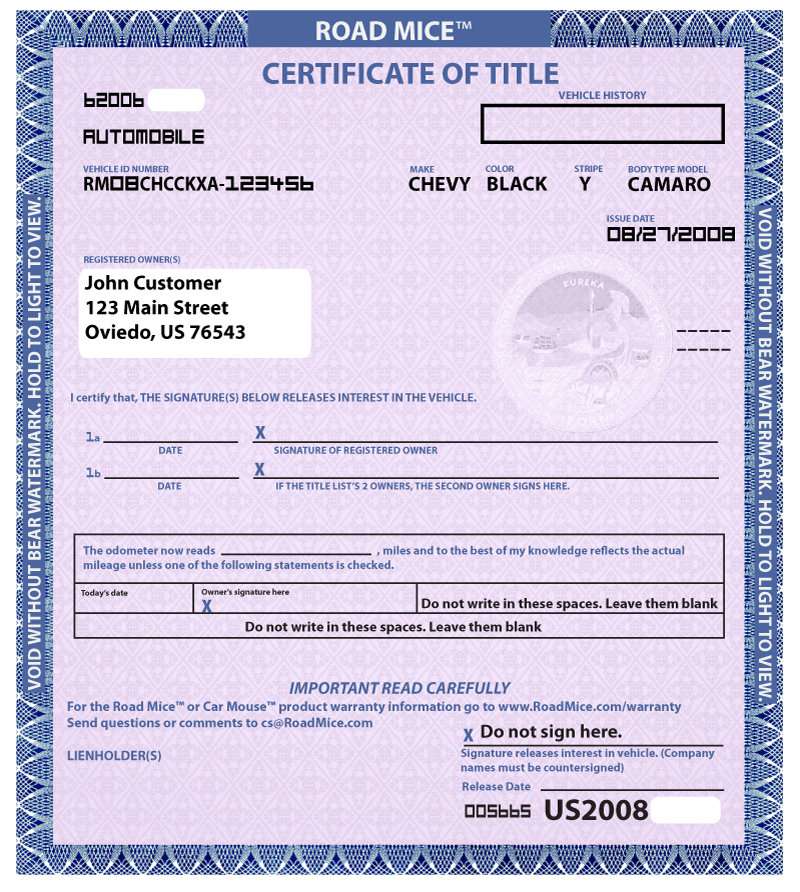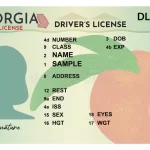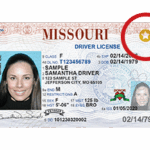Mail-In vs. Online Car Title Transfers: A Thorough Comparison

Transferring a car title can feel like navigating a bureaucratic labyrinth. Whether you’re selling a vehicle, buying a used car, or transferring ownership within your family, understanding the process is crucial. While the traditional mail-in method has been the standard for decades, online title transfer services are rapidly gaining traction. This article provides a comprehensive comparison of mail-in and online car title transfers, covering everything from the pros and cons of each method to state-specific regulations and potential pitfalls.
Understanding the Basics: What is a Car Title and Why is Transferring it Important?
Before diving into the comparison, it’s essential to understand what a car title actually is and why transferring it correctly is so vital.
What is a Car Title?
A car title is a legal document that proves ownership of a vehicle. Think of it as a deed to your car, similar to the deed you hold for your house. It contains critical information, including:
- Vehicle Identification Number (VIN): A unique alphanumeric code that identifies the specific vehicle.
- Owner’s Name and Address: The legal owner of the vehicle.
- Year, Make, and Model: Basic identifying information about the car.
- Lien Information (if applicable): Details about any loans or liens against the vehicle.
- Odometer Reading: The mileage recorded at the time of the last title transfer.
- Issue Date: The date the title was issued.
Why is a Car Title Transfer Necessary?
Transferring a car title is essential for several reasons:
- Legal Ownership: It legally transfers ownership of the vehicle from the seller to the buyer. Without a properly transferred title, the buyer doesn’t have a legal claim to the car.
- Registration and Insurance: You need a valid car title to register the vehicle with your state’s Department of Motor Vehicles (DMV) or equivalent agency and obtain car insurance.
- Avoiding Legal Issues: Failure to properly transfer a title can lead to legal complications, such as liability for accidents or unpaid parking tickets incurred by the previous owner.
- Selling the Vehicle: If you want to sell the car in the future, you’ll need a properly transferred title in your name.
- Preventing Fraud: A properly transferred title protects both the buyer and the seller from fraudulent activities.
Mail-In Car Title Transfers: The Traditional Route
The traditional method of transferring a car title involves completing the necessary paperwork, gathering supporting documents, and mailing everything to your state’s DMV.
- Gather Necessary Forms: Obtain the required title transfer application form from your state’s DMV website or local office. This form typically requires information about the buyer, the seller, and the vehicle.
- Complete the Application: Fill out the application form accurately and completely. Ensure all information matches the details on the existing car title.
- Obtain Seller’s Signature: The seller must sign the title and typically the application form, acknowledging the transfer of ownership. Notarization may be required in some states.
- Complete the Odometer Disclosure Statement: An odometer disclosure statement, often included on the title itself or as a separate form, must be filled out by both the buyer and the seller.
- Provide Supporting Documents: Gather any required supporting documents, such as:
- Bill of Sale: A document outlining the terms of the sale, including the purchase price, date of sale, and names of the buyer and seller.
- Proof of Insurance: Evidence that the buyer has obtained car insurance for the vehicle.
- Release of Lien (if applicable): If there was a loan on the vehicle, you need documentation from the lender confirming the lien has been released.
- Identification: Copies of the buyer’s and seller’s driver’s licenses or other forms of identification.
- Smog Certification (if required): Some states require a smog check before a title can be transferred.
- Calculate and Pay Fees: Determine the required title transfer fees, which vary by state and can depend on factors like the vehicle’s value. You’ll typically need to pay these fees by check or money order.
- Mail the Application and Documents: Carefully package all the required forms, documents, and payment, and mail them to the appropriate address for your state’s DMV. It’s recommended to use certified mail with tracking to ensure the package arrives safely and you have proof of delivery.
- Wait for Processing: The DMV will process your application, which can take several weeks or even months, depending on the state’s workload and efficiency.
- Receive the New Title: Once the application is approved, the DMV will mail the new car title to the buyer’s address.
Pros of Mail-In Car Title Transfers:
- Familiarity and Trust: Many people are comfortable with the traditional mail-in method, as it’s been the standard for a long time.
- Direct Interaction with DMV (Sometimes): While primarily mail-in, you might have the option to drop off the application at a local DMV office in some states if you prefer face-to-face interaction (though this often doesn’t expedite the process).
- Potentially Lower Fees: In some cases, the fees associated with mail-in transfers might be lower compared to online services, especially if you’re comfortable handling all the paperwork yourself.
- No Reliance on Technology: You don’t need a computer, internet access, or technical skills to complete a mail-in transfer.
Cons of Mail-In Car Title Transfers:
- Time-Consuming Process: Gathering documents, filling out forms, and waiting for processing can take weeks or even months.
- Potential for Errors and Delays: Mistakes on the application or missing documents can lead to delays or rejection of the application.
- Lack of Transparency: You often don’t have real-time visibility into the status of your application.
- Risk of Lost Documents: There’s always a risk of documents getting lost in the mail.
- Inconvenience: The process can be inconvenient, requiring multiple trips to the DMV or post office.
- Limited Support: Getting help with the application process can be difficult, as phone lines at the DMV can be busy, and wait times can be long.
- Not Available in All States: Some states are moving towards mandatory online processes for certain title transfers.
Online Car Title Transfers: The Modern Approach
Online car title transfer services leverage technology to streamline the process, making it faster and more convenient.
The Process of an Online Car Title Transfer:
- Choose an Online Service: Research and select a reputable online title transfer service that operates in your state.
- Create an Account and Enter Vehicle Information: Create an account on the platform and enter the required information about the vehicle, including the VIN, year, make, and model.
- Provide Buyer and Seller Information: Enter the names, addresses, and other relevant details for both the buyer and the seller.
- Upload Required Documents: Scan or take photos of the necessary documents, such as the car title, bill of sale, and identification, and upload them to the platform.
- Complete Online Forms: Fill out any required online forms, which are often pre-populated with the information you’ve already provided.
- Pay Fees Online: Pay the title transfer fees securely online using a credit card or other accepted payment method.
- Review and Submit Application: Carefully review all the information you’ve entered and the documents you’ve uploaded, and then submit the application.
- Digital Notarization (if required): Some online services offer digital notarization, allowing you to have your documents notarized remotely through a video conference.
- Track Application Status: Most online services provide real-time tracking, allowing you to monitor the status of your application.
- Receive Confirmation and New Title: Once the application is approved, you’ll receive a confirmation email, and the new car title will be mailed to the buyer’s address by the DMV.
Pros of Online Car Title Transfers:
- Convenience: The entire process can be completed from the comfort of your own home, eliminating the need to visit the DMV or post office.
- Speed: Online transfers are typically faster than mail-in transfers, with some services claiming processing times of just a few days.
- Transparency: Real-time tracking allows you to monitor the status of your application.
- Reduced Risk of Errors: Online platforms often guide you through the process and flag potential errors, reducing the risk of delays or rejection.
- Simplified Process: Online services simplify the process by providing clear instructions and pre-populating forms.
- Digital Notarization: Digital notarization eliminates the need to find a notary public in person.
- Improved Communication: Online services often offer better communication and support through email, phone, or chat.
- Accessibility: Online services are accessible 24/7, allowing you to complete the transfer at your convenience.
Cons of Online Car Title Transfers:
- Fees: Online services typically charge fees for their services, which can be higher than the fees associated with mail-in transfers.
- Technological Requirements: You need a computer, internet access, and basic technical skills to use online services.
- Security Concerns: Sharing sensitive personal and financial information online can raise security concerns.
- Limited Availability: Online title transfer services are not available in all states.
- Reliance on Third-Party Providers: You’re relying on a third-party provider to handle your title transfer, which can be a concern if the company is not reputable.
- Potential for Scams: There are fraudulent online title transfer services, so it’s important to choose a reputable provider.
- Data Privacy: You need to be aware of the online service’s data privacy policies and how it handles your personal information.
Key Differences Between Mail-In and Online Car Title Transfers: A Side-by-Side Comparison
| Feature |
Mail-In Car Title Transfer |
Online Car Title Transfer |
| Convenience |
Less convenient; requires physical trips |
More convenient; completed online |
| Speed |
Slower, weeks, or months |
Faster, days or weeks |
| Cost |
Potentially lower fees |
Potentially higher fees |
| Transparency |
Limited tracking and visibility |
Real-time tracking and visibility |
| Accuracy |
Higher risk of errors and delays |
Lower risk of errors and delays |
| Support |
Limited support from DMV |
Often, better support from an online service provider |
| Technology |
No technology required |
Requires a computer and internet access |
| Security |
Lower risk of online security breaches |
Higher risk of online security breaches |
| Availability |
Available in all states |
Limited availability in some states |
| Notarization |
Requires in-person notarization |
May offer digital notarization |
| Paperwork |
Requires physical paperwork and mailing |
Requires digital documents and online submission |
State-Specific Regulations and Requirements
Car title transfer regulations vary significantly from state to state. Before choosing a method, it’s crucial to understand the specific requirements in your state. Some key areas of variation include:
- Required Forms: The specific forms required for title transfer can differ significantly between states.
- Notarization Requirements: Some states require the seller’s signature to be notarized, while others don’t.
- Odometer Disclosure Rules: The rules for odometer disclosure can vary, including the format of the disclosure and whether it needs to be witnessed.
- Smog Check Requirements: Some states require a smog check before a title can be transferred, while others don’t.
- Acceptable Payment Methods: The acceptable payment methods for title transfer fees can vary.
- Online Title Transfer Availability: Online title transfer services are not available in all states.
- Lien Release Requirements: The requirements for releasing a lien on a vehicle can vary.
- Gift Transfers: The rules for transferring a title as a gift can differ from standard sales transfers.
- Inheritance Transfers: The process for transferring a title after the owner’s death can be complex and vary by state.
Examples of State-Specific Regulations:
- California: Requires a smog check for vehicles older than four years. Online title transfers are becoming increasingly prevalent, but may not be available for all situations.
- Texas: Requires a Vehicle Transfer Notification form to be filed with the state within 30 days of the sale.
- Florida: Allows online title transfers through the state’s e-Services portal for certain vehicle types and situations.
- New York has a mandatory vehicle inspection program. Online title transfers are limited.
- Pennsylvania: Requires a specific application for a certificate of title.
It’s essential to consult your state’s DMV website or a qualified legal professional to ensure you’re complying with all applicable regulations. Many states offer online resources, checklists, and downloadable forms to assist with the process.
Potential Pitfalls and How to Avoid Them
Regardless of whether you choose mail-in or online title transfer, there are potential pitfalls that can delay or complicate the process. Here’s how to avoid them:
- Incomplete or Inaccurate Information: Double-check all information on the application and supporting documents to ensure it’s accurate and complete. Any discrepancies can lead to delays or rejection.
- Missing Documents: Make sure you have all the required documents before submitting the application. Use a checklist to ensure you haven’t missed anything (most DMVs provide one online).
- Unclear Signatures: Ensure all signatures are clear and legible. If a signature is unclear, the DMV may reject the application.
- Failure to Release Lien: If there’s a lien on the vehicle, make sure the lienholder releases it properly before transferring the title. Obtain written confirmation of the lien release.
- Odometer Rollback: Be wary of odometer fraud, where the odometer has been tampered with to show a lower mileage. Inspect the vehicle carefully and compare the odometer reading to the vehicle’s history.
- Fraudulent Online Services: Be cautious of fraudulent online title transfer services. Research the company thoroughly before providing any personal or financial information. Look for reviews and check with the Better Business Bureau.
- Unpaid Parking Tickets or Tolls: Check for any outstanding parking tickets or tolls associated with the vehicle before transferring the title. These can prevent the transfer from being processed.
- Incorrect Fees: Make sure you calculate the correct title transfer fees and pay them in the required format. Check the DMV website or contact them directly to confirm the fees.
- Lost Title: If the original car title is lost, you’ll need to apply for a duplicate title before you can transfer ownership. This process can take time, so it’s best to address it as soon as possible.
- Incorrectly Completed Bill of Sale: Ensure the Bill of Sale includes all necessary information, such as the date of the sale, the price, a description of the vehicle, and the names and signatures of the buyer and seller.
- Ignoring State-Specific Requirements: As mentioned earlier, regulations vary by state. Failing to adhere to your state’s specific rules will almost certainly result in delays or rejection.
Choosing the Right Method: Factors to Consider
Deciding between mail-in and online car title transfer depends on your circumstances and preferences. Consider the following factors:
- Convenience and Speed: How much do you value convenience and speed? If you need to transfer the title quickly and prefer to do it from home, an online transfer is likely the better option.
- Cost: Are you concerned about minimizing costs? Mail-in transfers might be cheaper, but online services can save you time and effort, which might be worth the extra cost.
- Technical Skills: Are you comfortable using computers and the internet? If not, a mail-in transfer might be a better fit.
- State Availability: Is online title transfer available in your state? If not, mail-in transfer is your only option.
- Security Concerns: Are you concerned about sharing personal information online? If so, mail-in transfer might be preferable.
- Complexity of the Transfer: Is the transfer straightforward, or are there complicating factors, such as a lien or out-of-state title? For complex transfers, you might benefit from the guidance and support offered by an online service.
- Personal Preference: Ultimately, the best method depends on your personal preference. Consider your comfort level with technology, your budget, and your tolerance for paperwork and waiting.
When to Seek Professional Help
While both mail-in and online title transfers are designed to be relatively straightforward, certain situations may warrant professional assistance:
- Lost or Stolen Title: Applying for a duplicate title can be confusing and time-consuming. A title company or attorney can help you navigate the process.
- Complex Ownership Issues: If there are disputes over ownership or multiple owners, it’s best to consult with an attorney.
- Estate Transfers: Transferring a title after the owner’s death can be complex, especially if there’s no will. An estate attorney can guide you through the process.
- Out-of-State Transfers: Transferring a title from one state to another can be tricky, as the requirements may differ. A title company that specializes in out-of-state transfers can help.
- Significant Errors on the Title: If there are significant errors on the existing title, such as an incorrect VIN or owner’s name, you’ll need to correct them before you can transfer the title. A title company can help you with this process.
- Lien Disputes: If there’s a dispute over a lien on the vehicle, you should consult with an attorney to resolve the issue before transferring the title.
Conclusion: Weighing Your Options for a Smooth Title Transfer
Transferring a car title doesn’t have to be a daunting task. By understanding the differences between mail-in and online methods, considering your circumstances, and being aware of potential pitfalls, you can choose the right approach for a smooth and stress-free experience. Remember to always consult your state’s DMV website for the most up-to-date regulations and requirements. Whether you opt for the traditional route or embrace the convenience of online services, taking the time to do your research and follow the proper procedures will ensure that the title transfer is completed correctly and legally, protecting both the buyer and the seller. Good luck!















